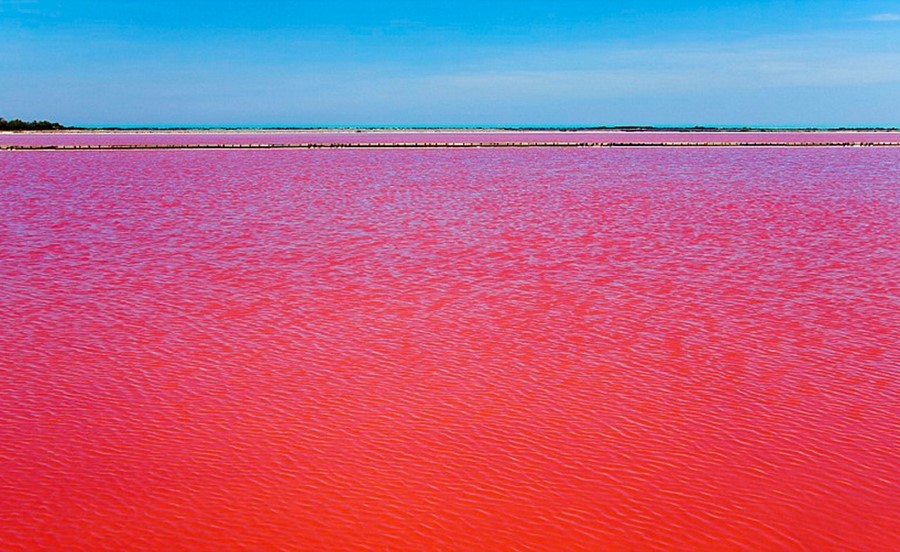A lake in Camargue in southern France has been the source of recent amazement, its once blue waters suddenly turning a shocking shade of blood red...
Where? A lake in Camargue in southern France has been the source of recent amazement, its once blue waters suddenly turning a shocking shade of blood red.
What? This incredible natural phenomenon, as breathtakingly strange and beautiful as the effects of the aurora borealis, is the result of the lake’s high salt content – it is one of many salt flats in France’s delta region where the Rhône meets the sea. Not only has the lake taken on the hue of a strawberry slushie, but an abundance of salt crystal formations (icicle-like in appearance) have also emerged across its surface, attaching themselves to surrounding plants and rocks. The occurrence has been documented in a set of extraordinary images by Russian photgrapher Sam Dobson, who happened to be passing the lake in his car and described its appearance as “something extra-terrestrial.”
"Dunaliella salina produce a red pigment that absorbs and uses the energy of sunlight to create more energy, turning the water pink"
Why? According to a recent interview with Michael Danson, a specialist in extremophile bacteria from Bath University, the colour is the product of “a salt-loving organism [called] Dunaliella salina”. He expanded, “They produce a red pigment that absorbs and uses the energy of sunlight to create more energy, turning the water pink.”
Red, the colour of fire and blood, is universally considered the basic symbol of the life principle. In its bright, centrifugal form it can symbolise passion, anger, danger and manifestation – think red traffic lights, the notorious red lights of Parisian licensed brothels or the striking red of the communist flag; transversely, dark red is nocturnal and earthy, with connotations to the female womb and the mystery of life.
Text by Daisy Woodward
